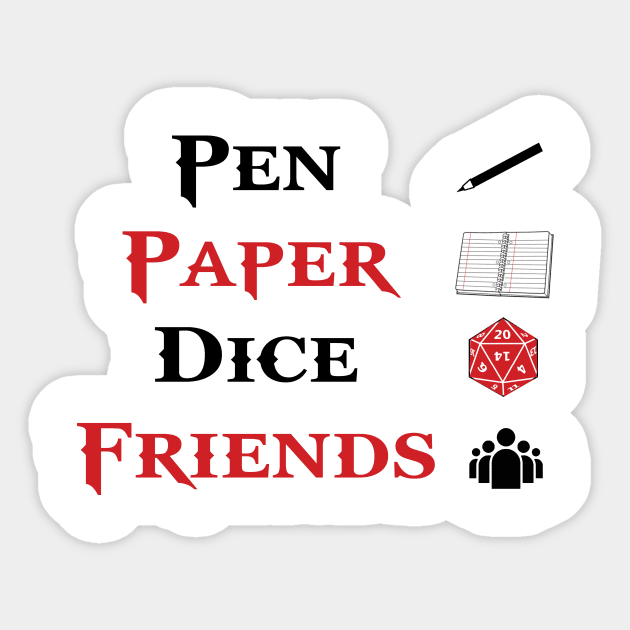From the humble beginnings of tabletop adventures to the sprawling digital worlds of today, Role-Playing Games (RPGs) have remained a cornerstone of the gaming industry. Their core appeal is timeless: the chance to step into another’s shoes, to grow from a novice into a legend, and to leave a mark on a richly detailed world. While the foundational elements of character progression and narrative choice persist, the definition of an RPG has become increasingly fluid. The modern landscape is a vibrant tapestry of blended genres, technical innovation, and evolving player expectations. Today’s RPG Games are not just about turn-based combat and lengthy dialogues; they are dynamic, action-packed, and endlessly replayable experiences that push the boundaries of what a game can be. This article delves into the anatomy of the modern RPG, dissecting the core mechanics that define them, exploring the rise of innovative subgenres, and analyzing the critical Game Design and development choices that shape these immersive digital adventures, a frequent topic in Gaming News.
The Pillars of Role-Playing: Defining the Core RPG Experience
Despite the genre’s vast diversity, a few fundamental pillars uphold the entire structure of an RPG. These core components are the language through which players interact with the game world and measure their journey. Understanding them is key to appreciating the complexity and appeal of titles across the spectrum, from massive AAA Games to innovative Indie Games.
Character Progression: The Heart of the Journey
At its absolute core, an RPG is about growth. This is most tangibly represented through character progression systems. The classic model involves earning experience points (XP) from completing quests, defeating enemies, and exploring the world, which in turn leads to “leveling up.” This level-up moment is a satisfying feedback loop, typically granting players points to allocate into core attributes like Strength, Dexterity, Intelligence, or Charisma. Beyond these base stats, modern RPGs feature elaborate skill trees or ability webs. For example, the massive passive skill tree in Path of Exile offers a staggering level of build customization that has become a hallmark of the deep PC Gaming experience. In contrast, a game like Final Fantasy VII Remake streamlines progression into weapon-based abilities and Materia, offering depth without overwhelming the player. This system is the engine of the RPG, providing a constant sense of forward momentum and rewarding the player’s time and effort.
Player Agency and Narrative Choice
What good is a powerful character without the ability to influence the world around them? Player agency—the capacity for a player’s choices to have meaningful consequences—is another critical pillar. This can manifest in branching dialogue trees, moral dilemmas that alter faction alignments, or major plot decisions that lead to entirely different endings. Larian Studios’ Baldur’s Gate 3 is a masterclass in this, where choices both large and small ripple throughout its massive narrative, creating a unique story for every player. This contrasts with more linear JRPGs (Japanese Role-Playing Games), which often prioritize a tightly crafted, cinematic story over broad player choice. The degree of agency is a crucial design decision that shapes the entire feel of the game, determining whether the player is an actor in a grand play or the director of their own epic.
World-Building and Exploration
The final pillar is the world itself. A compelling setting is the canvas upon which the player’s adventure unfolds. Great RPG worlds are more than just pretty backdrops; they are characters in their own right, filled with history, lore, and secrets waiting to be discovered. Exploration is the primary way players engage with this world-building. Games like The Elder Scrolls V: Skyrim excel at this, rewarding a player’s curiosity with hidden dungeons, unique items, and environmental storytelling that fleshes out the history of its world. The rise of open-world design has made this pillar more prominent than ever, but even linear games can have exceptional world-building through meticulous level design and rich lore, a testament to the enduring power of a well-realized fantasy setting in Gaming History.
The RPG Spectrum: A Breakdown of Modern Subgenres
teenager playing Nintendo Switch in living room – Screen time resources to support children | Internet Matters
The classic RPG formula has proven to be incredibly malleable, serving as a foundation that can be blended with nearly any other genre. This hybridization has led to an explosion of creative and engaging subgenres that dominate Game Releases on platforms from Steam to the PlayStation Store, often discussed in PlayStation News and Xbox News.
The Action RPG (ARPG)
The Action RPG is arguably the most popular subgenre today. ARPGs ditch traditional turn-based or menu-based systems in favor of real-time, visceral combat that relies on player reflexes, positioning, and skill. Games in the Diablo series are the quintessential example, combining fast-paced, loot-driven combat with deep character-building. In these games, your character’s stats and gear are crucial, but so is your ability to dodge attacks and aim your abilities effectively, making a responsive Gaming Mouse and Gaming Keyboard essential peripherals for success. This blend of strategic character management and immediate, satisfying action has proven to be a powerfully addictive formula.

The Roguelike and Roguelite Renaissance
Another major trend is the fusion of RPG mechanics with the roguelike genre. Traditional roguelikes are defined by procedural content generation (PCG), permadeath (losing all progress upon death), and turn-based gameplay. The modern “roguelite” softens this formula by adding meta-progression—permanent upgrades that persist between runs. Games like Hades and Dead Cells have perfected this loop. Each run is a unique, procedurally generated challenge, but even in failure, you earn resources to unlock new weapons, abilities, and character stats, making you stronger for the next attempt. This structure leverages RPG progression systems to create immense replayability, making them a favorite on the Game Streaming platform Twitch, as every playthrough offers a new experience for viewers.
The Hybridization Effect: Blurring Genre Lines
The most exciting developments in the Gaming Industry are happening where genres collide. We now see RPG mechanics in everything from FPS Games (like the loot and skill systems in Borderlands or Destiny 2) to Strategy Games. The “Fantasy Action Roguelite with RPG mechanics” is a perfect example of this trend. It promises the fast-paced combat of an ARPG, the high-stakes, endlessly replayable structure of a roguelite, and the deep character customization of a traditional RPG. This creates a gameplay loop where players must master both twitch reflexes and strategic build-crafting, ensuring that no two runs are the same, thanks to a vast pool of items and a procedurally generated world.
The Technical Backbone: Game Design and Development Considerations
Creating a compelling modern RPG is a monumental task that balances creative vision with complex technical challenges. Key decisions made during Game Development, often using powerful tools discussed in Unity News and Unreal Engine News, can make or break the final experience.
Procedural Content Generation (PCG)
PCG is the engine behind the replayability of many modern RPGs, especially roguelites. Instead of hand-crafting every single level, developers create algorithms that generate worlds, dungeons, and loot distributions on the fly. The primary benefit is a near-infinite amount of content, ensuring a unique experience every time. However, a common pitfall is that purely procedural worlds can feel generic, random, or soulless. The best practice is a “procedurally assisted” approach, where developers create hand-crafted rooms, encounters, or story beats, and the algorithm arranges them in unique ways. This hybrid model, seen in games like Spelunky 2, provides both the structure of intentional design and the unpredictability of procedural generation.
teenager playing Nintendo Switch in living room – Parents fear devices are impacting family time | Internet Matters
Balancing a Complex System: Items, Classes, and Difficulty
An RPG with hundreds of items and over a dozen playable classes is a balancing nightmare. The goal is to ensure build diversity, where multiple strategies are viable and fun, without a single “meta” build dominating the game. Developers must constantly analyze data to prevent power creep (where new content makes old content obsolete) and to fine-tune the interplay between countless abilities and stats. This is a challenge familiar to developers of MOBA Games like League of Legends News and Dota 2 News, who release frequent patches to maintain balance. For a single-player or co-op RPG, this means rigorous testing to ensure the difficulty curve is challenging but fair, and that players feel rewarded for experimenting with different character builds.
Porting to Consoles: The Nintendo Switch Challenge
Bringing a complex game to multiple platforms is a significant technical hurdle, a topic often covered in Nintendo News. Porting a game developed for high-end Gaming PCs, with powerful Graphics Cards and ample RAM, to a less powerful console like the Nintendo Switch requires careful optimization. Developers must reduce texture quality, simplify geometric detail, and implement dynamic resolution scaling to maintain a stable framerate. The user interface must be completely redesigned to be intuitive with Game Controllers rather than a mouse and keyboard. The successful ports of massive games like The Witcher 3 to the Switch are considered technical marvels, demonstrating that with smart engineering and targeted compromises, a great RPG experience can be delivered on a wide range of Gaming Hardware.
The Modern RPG Landscape: Best Practices and Player Considerations
The RPG market is more crowded and diverse than ever. For developers, standing out requires a commitment to quality and community. For players, this variety offers incredible choice but can also be daunting. Understanding what defines success and how to navigate the options is key for everyone in the Gaming Community.

teenager playing Nintendo Switch in living room – Children experiencing harm online remains high | Internet Matters
What Makes a Modern RPG Succeed?
Beyond a bug-free launch, several factors contribute to a modern RPG’s success. A satisfying core gameplay loop—the cycle of combat, exploration, and reward—is paramount. Systems must be deep enough to engage hardcore players but accessible enough not to alienate newcomers. For games with high replayability, like roguelites, strong post-launch support with new content, balance patches, and community engagement is crucial for longevity. Finally, a distinct artistic vision and a well-written narrative can elevate a mechanically sound game into a truly memorable one. The success of titles like Elden Ring or the continued relevance of Skyrim through Game Mods shows that a combination of solid mechanics and a compelling world is a recipe for enduring success.
Tips for Players: Choosing Your Next RPG Adventure
With so many options, here are a few things to consider before diving into your next RPG:
-
Combat Style: Do you prefer the strategic, thoughtful pace of turn-based combat (Persona 5, Baldur’s Gate 3) or the fast-paced, reflex-driven thrill of an ARPG (Diablo IV, Nioh 2)?
-
Narrative vs. Systems: Are you looking for a deep, character-driven story that will stay with you for years, or do you prefer a game focused on intricate mechanics, build-crafting, and endless loot grinding?
-
Playtime and Replayability: Do you want a single, 100-hour epic journey, or a game you can pick up for 30-minute runs that will keep you engaged for hundreds of hours through high replayability?
-
Platform: Consider where you want to play. A high-end Gaming PC with a top-tier Gaming Monitor will offer the best graphical fidelity, while consoles offer couch co-op convenience, and platforms like Cloud Gaming provide access without powerful hardware.
Conclusion: The Ever-Evolving Adventure
The Role-Playing Game genre is a testament to the power of interactive storytelling and systematic progression. While its roots in Retro Gaming are still visible, the modern RPG is a dynamic and forward-looking genre, constantly reinventing itself by borrowing and blending elements from across the gaming landscape. The fusion of action, roguelite, and core RPG mechanics represents the cutting edge of this evolution, offering players deep, rewarding, and endlessly replayable experiences. For developers, the challenge lies in mastering the complex technical and design hurdles of procedural generation, intricate balancing, and multi-platform development. As technology advances, with possibilities in VR Gaming and AI-driven narratives on the horizon, the one constant is our desire to embark on a grand adventure—a desire the RPG is uniquely equipped to fulfill, now and for generations to come.













